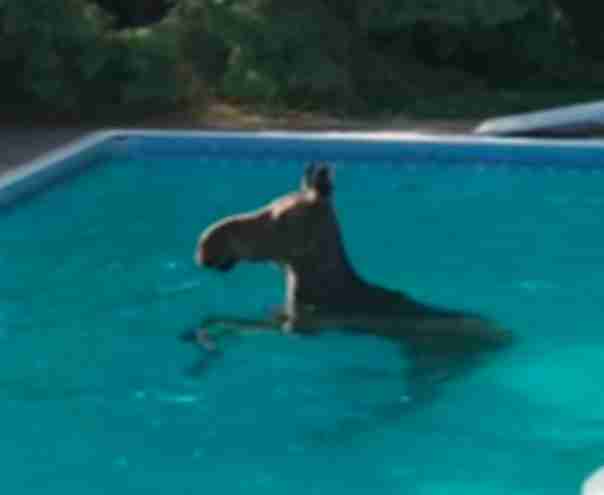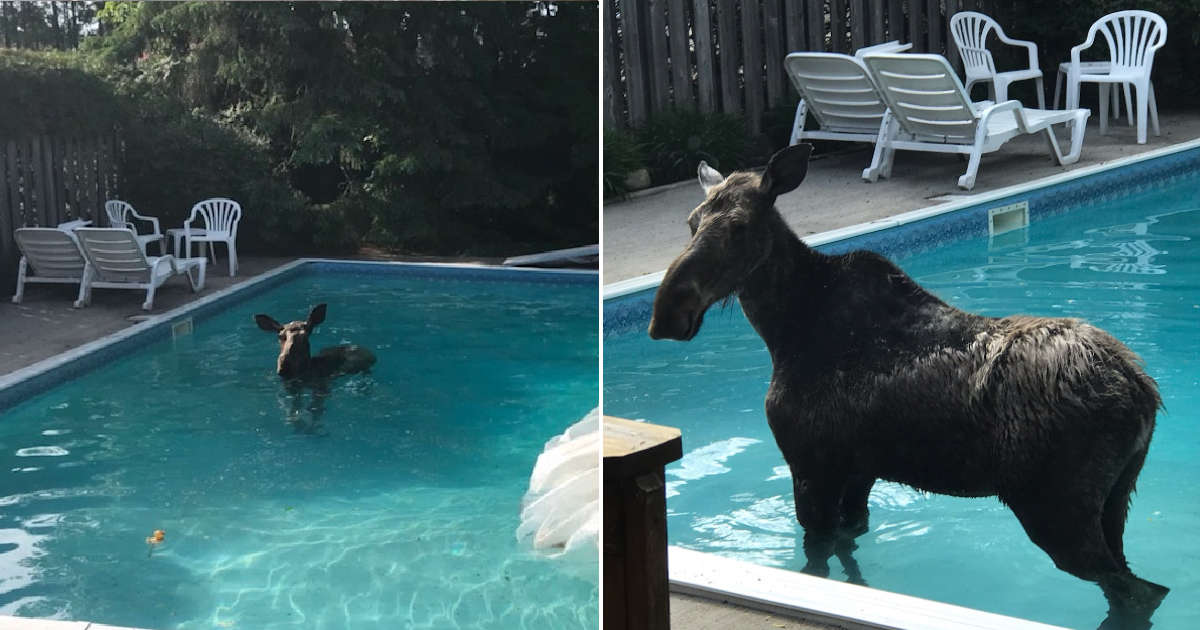Last month, Paul Koch went to make himself breakfast and found an uninvited guest using his pool.
A large female moose was swimming in the deep end, wrapped in the solar cover. It was immediately clear that she needed help.

Paul Koch
“I looked out in the backyard and there’s this moose absolutely panicked and struggling,” Koch told The Dodo. “She stepped on the solar blanket and put her foot through it and got all tangled up and she was desperately trying to get free.”

Paul Koch
Koch has noticed more wildlife around his home in Ottawa, Canada, since the COVID-19 outbreak, but he had never seen an animal this impressive before. “We’ve lived in this house for 40 years, and this is the first time I’ve seen a moose this close to the city,” Koch said.
Koch rushed outside and pulled the solar cover off the grateful moose, who continued paddling around the pool, proving to be a surprisingly adept swimmer.

Paul Koch
Moose are born knowing how to swim and spend much of their time in the water — especially in the winter when they graze on underwater plants. They can even shut their large nostrils and hold their breath for up to a minute.
The wild moose seemed to be having trouble finding her way out of the pool, so Koch called the police and wildlife services to see if they could lend a hand. “She looked so forlorn out there that my wife said, ‘I want to give her a hug,’” Koch said.
Workers with wildlife services worried that they would have to give the moose a tranquilizer to get her to a safer spot, but they couldn’t administer it until she was out of the water.
Luckily, all the moose needed was a little more time to find her bearings.

Paul Koch
“The best thing that happened was that after three and a half hours she climbed out of the shallow end and jumped over the fence,” Koch said. “The police came back and told me that she got back to the wooded area that she had come from.”
The moose escaped unscratched, but the same can’t be said for Koch’s pool — which now has two hoof-sized holes in the bottom.
